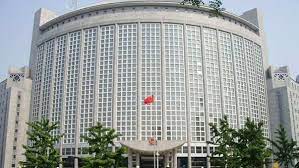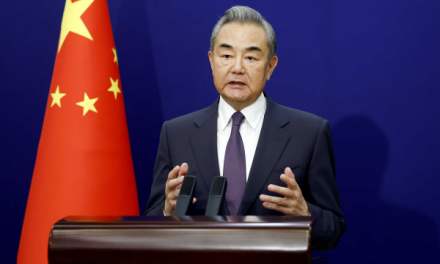
China’s path to modernization unique

By Zhou Yuehui
The word “modernization” was coined sometime in the mid-18th century to refer to the evolutionary transition from a “pre-modern” or “traditional” to a “modern” society.
Chinese people became familiar with the term after the People’s Republic of China, following its founding in 1949, set the goal of building a modern socialist country. Decades later, China adopted the concept of “Four Modernizations” in order to strengthen the industrial, agricultural, defense, and science and technology sectors as a means to rejuvenate the country’s economy.
The developed Western countries realized modernization because of their economies of scale, industrial growth and degree of civilization. Modernization started in the West after the Industrial Revolution, and its highly-developed productivity and modern technology paved the path to global modernization.
However, China’s history, culture, demography and natural resources are different from those of the West. China needs to develop socialism with Chinese characteristics. So China’s path to socialist modernization differs from the West’s modernization despite both being based on highly developed productivity.
China’s new path to modernization is of utmost importance to socialist development, as can be seen in its strong vitality in scientific socialism in the 21st century.
According to Communist Party of China Central Committee General Secretary Xi Jinping’s exposition on Chinese-style modernization, the main characteristics of the unique Chinese path to modernization are based on five factors.
First, Chinese-style modernization is for a huge population. China is home to more than 1.4 billion people, with the population of some of its provinces being larger than that of some Western countries. So, as the world’s most populous country, China’s modernization is different from that of developed Western countries. The successful modernization of a country with a population that exceeds the combined total of all the developed countries will completely change the international landscape.
Second, Chinese-style modernization aims at common prosperity for every one. It will promote social fairness and justice. And efforts will be made to constantly enhance people’s sense of fulfillment, happiness and security. In contrast, Western-style modernization follows the logic of capital, emphasizes private ownership, capital allocation and the omnipotence of the market. As capitalism creates inequality and inequitable distribution of wealth, Western-style modernization widens the gap between the rich and the poor.
Third, Chinese-style modernization balances material and cultural-ethical progress, enabling the people to lead healthy and intellectually and culturally rich lives, while Western-style modernization stresses material abundance and endless material pursuit.
Fourth, Chinese-style modernization features a harmonious coexistence between humanity and nature. That’s why China, unlike the West, doesn’t believe in addressing the environmental problems after the damage is done; instead, it takes steps in advance to prevent pollution and better protect the environment. It also creates more material and cultural wealth to meet people’s ever-increasing needs for a better life, and provides more eco-friendly goods to fulfill people’s demand for a clean, beautiful environment.
And fifth, Chinese-style modernization follows the path of peaceful development. That’s why China has chosen its own path to modernization, so as to boost its development and contribute to global modernization. It is also committed to building a global community with a shared future and facilitating global peace and development.
The new path to modernization with Chinese characteristics follows the regular laws governing modernization, steers the tide of human progress and champions the shared human values of peace, development, fairness, justice, democracy and freedom.
As Xi Jinping has said, “Practice has shown that as the new and uniquely Chinese path to modernization grows even wider, it will bring better development prospects to China and more benefits to the world.”
The new path to modernization with Chinese characteristics has transformed the fate of the Chinese nation and has had a profound influence on the course of world history. It offers a new option for other countries to expedite their development while preserving their independence, and makes significant contributions to humankind’s search for different ways to achieve modernization.
The world is big enough to accommodate different paths to modernization. So countries’ choice of independently exploring the path to modernization that best suits their national conditions should be respected. However, the CPC is willing to share with political parties of other countries its modernization experience so they can improve the well-being of their people as well as the people in the rest of the world.
The successful modernization of the world’s most populous country will promote global modernization, and help accelerate human development worldwide. That’s why China, apart from following the regular laws governing global modernization, has chosen its own unique path to modernization. China’s new path has enriched the theory and practice of modernization, and the country has been contributing Chinese wisdom to facilitate, and Chinese solutions to the problems facing, global modernization.
The author is a professor of economics at the Party School of the Communist Party of China Central Committee.





































